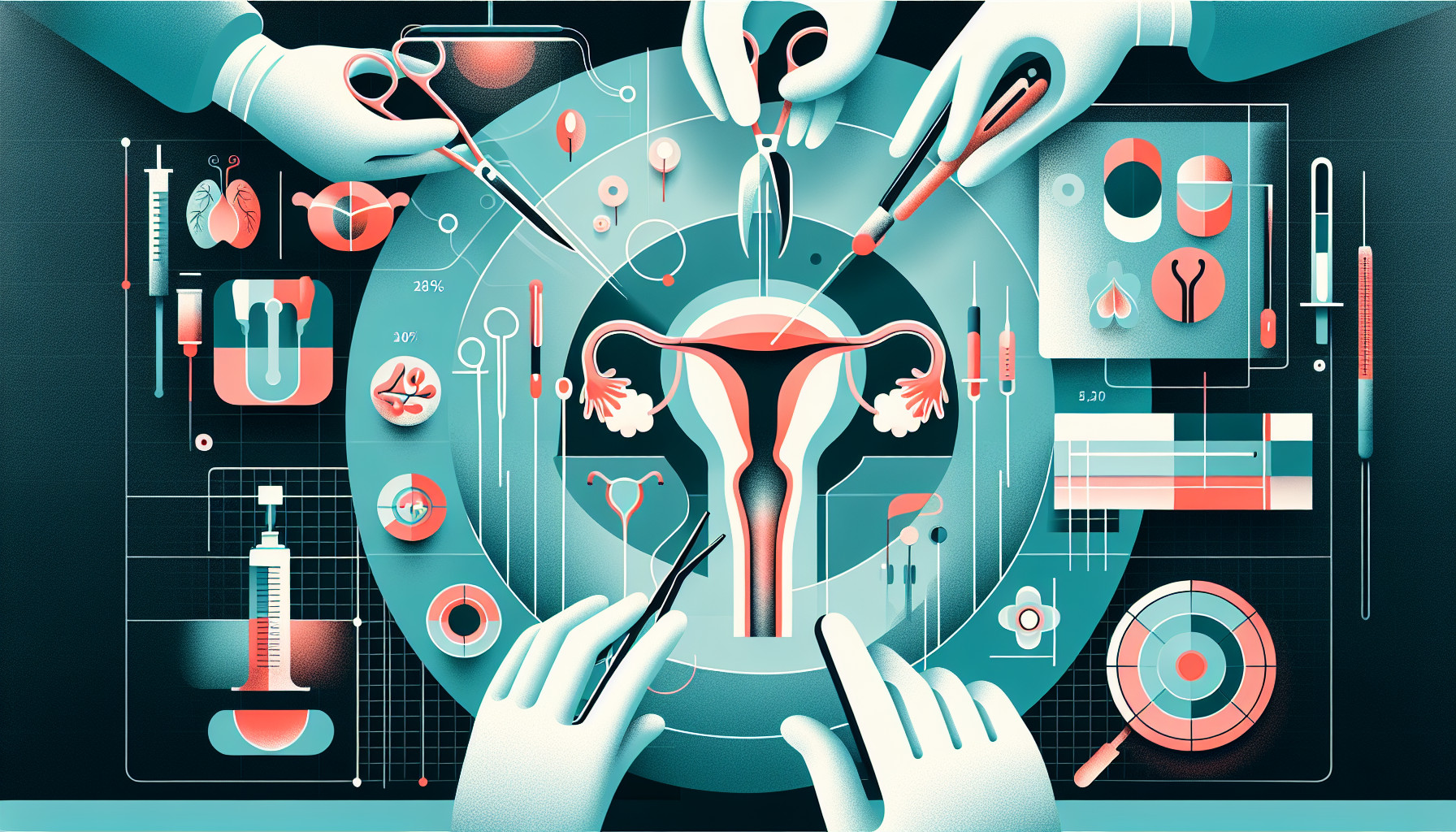Our Summary
This research paper is about a rare disease in women called urethral stricture. This is when the urethra, the tube that carries urine from the bladder out of the body, becomes narrow or blocked. The main cause seems to be injury during medical procedures.
The paper suggests that to diagnose this, doctors should take a detailed history from the patient, do a physical exam, and use different tools to look inside the bladder and urethra.
In terms of treatment, there are many different surgical techniques. The research found that the most successful procedures in the medium-term used grafts and flaps of tissue from the mouth or vagina. However, less invasive techniques, like stretching the urethra, were not as successful in the long-term, especially if the treatment had to be repeated.
The researchers concluded that more work is needed to compare different treatments and define what long-term success looks like. They also emphasized that treatment should be individualized, taking into account the patient’s symptoms, the cause of the stricture, the health of the surrounding tissue, and the location of the stricture.
FAQs
- What is urethral stricture and what are its main causes?
- How is urethral stricture diagnosed and what are the different treatment options available?
- What are the most successful surgical procedures for treating urethral stricture and what factors should be considered when choosing a treatment?
Doctor’s Tip
A helpful tip a doctor might tell a patient about urethroplasty is to closely follow the post-operative care instructions provided. This may include avoiding strenuous physical activity, keeping the surgical site clean and dry, taking prescribed medications as directed, and attending follow-up appointments for monitoring and evaluation of the healing process. Adhering to these guidelines can help ensure a successful recovery and optimal outcomes from the urethroplasty procedure.
Suitable For
Patients who are typically recommended for urethroplasty are those who have been diagnosed with a urethral stricture that is causing symptoms such as difficulty urinating, frequent urinary tract infections, urinary retention, or incontinence. These patients may have already tried less invasive treatments such as urethral dilation or internal urethrotomy without success. Additionally, patients who have a history of urethral trauma, such as from a previous surgery or catheterization, may also be recommended for urethroplasty.
It is important for patients to undergo a thorough evaluation by a urologist to determine if they are a candidate for urethroplasty. This evaluation may include a physical exam, imaging studies, and urodynamic testing to assess bladder function. The urologist will also take into account the patient’s overall health and any other medical conditions they may have before recommending urethroplasty.
Overall, urethroplasty is considered to be a safe and effective treatment for urethral strictures, with high success rates in the medium to long term. By individualizing treatment based on the patient’s specific circumstances, urologists can help improve outcomes and quality of life for patients with urethral strictures.
Timeline
- Before Urethroplasty:
- Patient experiences symptoms such as difficulty urinating, frequent urinary tract infections, weak urine stream, and pain during urination.
- Patient consults with a urologist who takes a detailed medical history and performs a physical exam.
- Diagnostic tests such as cystoscopy, urethral dilation, and imaging studies are conducted to confirm the diagnosis of urethral stricture.
- Non-invasive treatments such as urethral dilation or urethrotomy may be attempted, but long-term success is limited.
- Patient is recommended for urethroplasty, a surgical procedure to reconstruct or widen the narrowed urethra.
- After Urethroplasty:
- Patient undergoes urethroplasty surgery, which involves using grafts or flaps of tissue from the mouth or vagina to reconstruct the urethra.
- Recovery period post-surgery includes catheterization for a few weeks to allow the reconstructed urethra to heal properly.
- Patient may experience temporary side effects such as urinary retention, pain, and discomfort during urination.
- Follow-up appointments with the urologist are scheduled to monitor the success of the surgery and address any complications.
- Long-term success of the urethroplasty is evaluated based on the patient’s symptoms, urinary function, and overall quality of life.
Overall, the timeline of a patient before and after urethroplasty involves a thorough diagnostic process, surgical intervention, and post-operative care to achieve successful treatment of urethral stricture.
What to Ask Your Doctor
- What are the potential causes of my urethral stricture?
- What diagnostic tests will be used to determine the extent of my condition?
- What are the potential risks and complications associated with urethroplasty surgery?
- How long is the recovery process after urethroplasty surgery?
- What are the success rates of different surgical techniques for urethroplasty?
- How will my symptoms be managed before and after surgery?
- Are there any lifestyle changes or precautions I should take to prevent recurrence of urethral stricture?
- How often will follow-up appointments be needed after the surgery?
- Are there any alternative treatments or therapies available for urethral stricture?
- How will my individual circumstances and medical history be taken into account when determining the best treatment plan for me?
Reference
Authors: West C, Lawrence A. Journal: World J Urol. 2019 Apr;37(4):619-629. doi: 10.1007/s00345-018-2564-4. Epub 2018 Nov 19. PMID: 30456711
